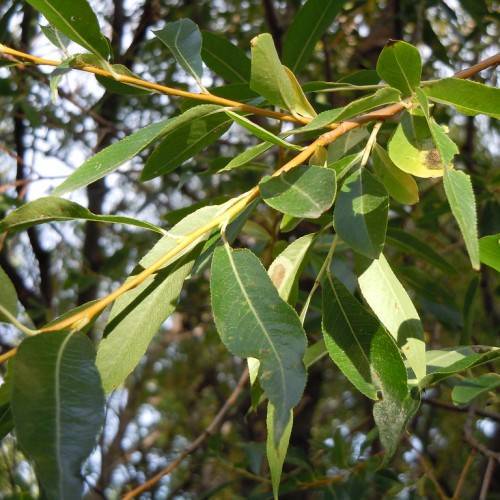
Pacific willow
Salix lucida ssp. lasiandra
Cycle:
Perennial
Watering:
Frequent
Hardiness Zone:
6
Flowers:
Flowers In Spring
Sun:
Full sun, Part sun/part shade
Soil:
Bog
Fruits:
Fruits Ready In Fall
Leaf:
Yes
Growth Rate:
High
Maintenance:
Low
Drought Tolerant:
Yes
Care Level:
Medium
watering
Hooker's willow should be watered every 5-10 days, depending on the weather. During warm weather, the plant should be watered more often. During cooler weather, water less often. When watering, thoroughly soak the soil. Letting the soil dry out fully before watering again is important for proper plant health. Additionally, it's important to keep the foliage dry and avoid wetting it when watering.
sunlight
Hooker's willow is a deciduous shrub species that prefers full sun and at least 6 or more hours of direct sunlight per day. The plant does best when it receives sunlight during the mid-morning and mid-afternoon when the sun's rays are weaker. In summer months, the plant should be shaded from the strongest rays of the day, particularly during noon. In winter, the plant should receive as much sunshine as possible as long as it is not too intense.
pruning
Hooker's willow should be pruned lightly each year in the early spring before the new growth appears. Care should be taken to only prune dead and damaged branches, as this type of willow can become disfigured if heavily pruned. When pruning, make sure that the cuts are clean and angled slightly outward so that water can run away from the bud. Prune only the sides and not the top of the tree. It is best to prune the Hooker's willow in gradually decreasing amounts, so that it retains some of its natural form.
